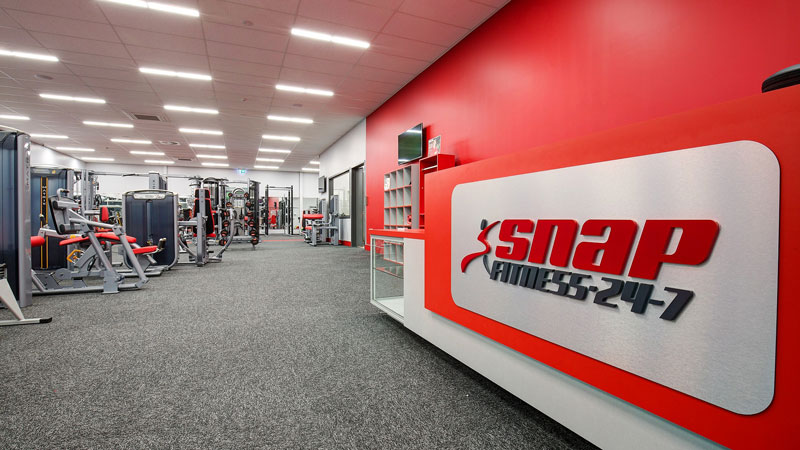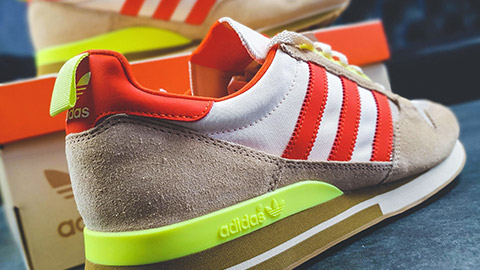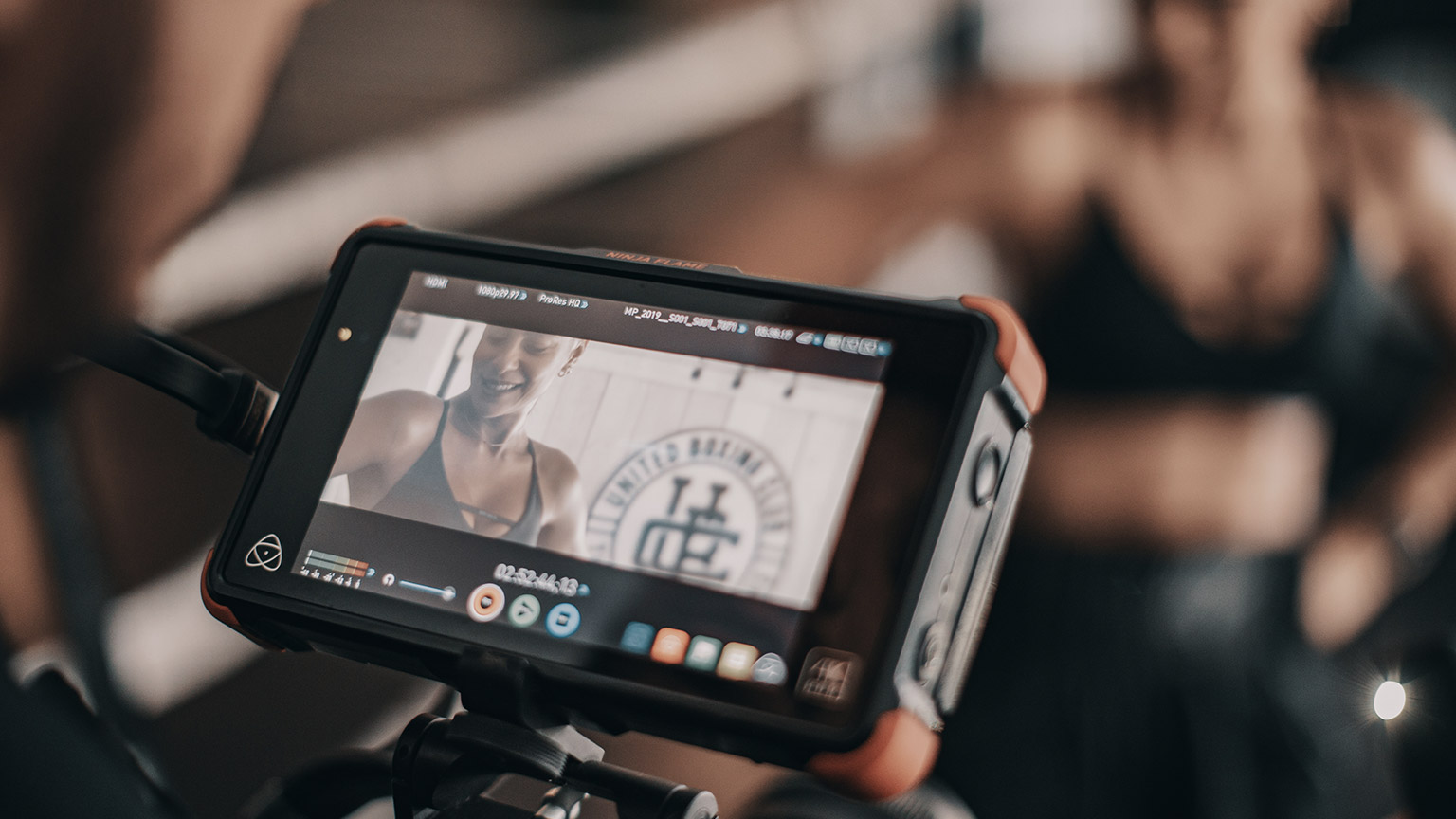Branding is a crucial aspect of marketing that helps businesses differentiate themselves from their competitors and establish a unique identity in the minds of their customers. In simple terms, branding is the process of creating a recognisable and memorable name, logo, design, or symbol that represents your business and its values.
In the fitness industry, branding is especially important because it can help you stand out from the numerous other trainers and gyms out there. To create a strong brand, you need to consider various elements such as your target audience, your unique selling proposition, and your overall image.
One important aspect of branding is consistency. This means that all of your marketing materials, from your website to your business cards, should have a cohesive look and feel that aligns with your brand's values and personality. Consistency is key in building trust and recognition with your customers.
Another key element of branding is storytelling. Your brand should tell a compelling story about who you are, what you stand for, and why you're passionate about helping people achieve their fitness goals. By sharing your personal journey, your values, and your mission, you can connect with potential clients on a deeper level and create a loyal following.
Ultimately, a strong brand can help you attract and retain clients, differentiate yourself from your competitors, and build a positive reputation in your industry. So, take the time to develop a brand that truly represents you and your business, and you'll be well on your way to success in the fitness industry.
Have a look at the following slide of images to view some very well-known brands that may resonate with you. What comes to mind when you think of these brands?
- Coca Cola
- Air New Zealand
- Sony PlayStation
- McDonald's
- Disney
When a business is building its brand, it should focus on attracting the right kind of customers who will benefit from its services. Your brand is basically what people think about when they hear your business's name - it's like a promise of what you offer and what you stand for. To build a strong brand, you need to make sure you're promoting it consistently and with high quality, so people can recognise your business at a glance and feel connected to it.
Here are a considerations required when developing your own brand:
- What will be the brand name?
- What will the logo look like?
- Will the brand have a slogan?
- Will the brand need a website?
- What are my advertising options for the brand?
- Should my brand be trademarked?
- What do I wish to convey to my target market?
Be mindful that a brand is a lot more than simply just the product you sell.
Characteristics of world-class brands
Here are the ten common characteristics of the world’s top brands.
- Excels at delivering the benefits which customer’s desire
- It stays relevant
- It's pricing strategy is based on consumer’s perceptions of value
- Is properly positioned in the marketplace
- It is consistent and remains so
- It's portfolio and hierarchy make sense
- It coordinates a full repertoire of marketing activities to build equity
- It's managers understand what the brand means to consumers
- It is given proper consumer support that is sustained for a long time
- The company monitors sources of equity (Keller, 2000)
Finding your own brand can be a challenging but rewarding process.
To start, consider what makes you unique and what sets you apart from others in your industry or field. Consider your values, strengths, passions, and expertise, and how they can be incorporated into your brand.
Conduct market research to better understand your target audience and what they seek in a brand. Use this information to develop a brand personality that resonates with your audience and aligns with your values.
Create a clear and concise message that communicates your brand's value proposition, and use it consistently across all your marketing channels.
Finally, be authentic and true to yourself throughout the branding process. Your brand should be a reflection of who you are and what you stand for, so don't be afraid to let your personality shine through. Remember that building a brand is an ongoing process, and it may take time to refine and evolve your brand over time.
Try it out
Create a brand that is unique to you!
The decisions you make about your brand are critical in shaping how consumers perceive your product or service. To attract the right customers, you need to make branding decisions that address the needs of your target market. This means that the choices you make for your brand should appeal to the clients you want to attract. Some branding considerations include the following:
- Name
- Logo
- Slogan
- Pictures
- Colours
- Fonts
- Information
The following image illustrates the familiar signage of Snap Fitness brand logo. Below the logo, it contains simple information that encourages the need to use the gym as it has flexible hours which suits many with busy lifestyles. What other things might you think of when you see the Snap Fitness logo? Quality? Easily accessible? Economical? These thoughts are not by accident! Snap Fitness have given themselves a fantastic reputation by building their brand to meet the needs of their clients.

Other competing gyms that have a similar offering of flexible hours and convenience include places such as Jetts and Anytime Fitness. After reading the names “Jetts” and ”Anytime Fitness”, did you associate these gyms with their brand? Did you visualise their logo or setup of their gym? If so, their marketing of their brands has connected with you as a consumer. You may, or may not find the brand and gym appealing.
What can be noted from the above observations is that strong brands forge lasting connections with customers based on brand meaning.
Try it out
Let's have a go at reflecting on how Les Mills branding may have impacted or influenced you as a consumer.
How has Les Mills marketing worked on you?
Let’s look a little deeper into ways to further engage our target market through branding.
When marketing your brand, it is crucial to consider:
Brand meaning
This refers to the beliefs and associations that consumers have about a brand, which businesses use to build brand loyalty. With the growing popularity of social networking and digital communication, brand meanings can spread rapidly through online sharing. To build on their brand meaning, business owners are turning to brand storytelling as an effective method to engage consumers and establish their identity. Marketers aim to create compelling stories that connect with consumers and reinforce the brand's identity.
One well-known personal trainer, Kayla Itsines, has built a successful brand by focusing on her target audience's needs and beliefs. Her brand meaning is centred around empowering women to feel confident and strong through fitness.
She achieved this by creating a workout programme that helps women achieve their fitness goals, sharing inspiring success stories on social media, and building a supportive community that encourages women to support each other.
By consistently reinforcing her brand meaning through her messaging and marketing, Kayla Itsines has developed a loyal following of women who resonate with her brand and its values.
Check out her website and take note of her brand.
Brand personality
Brand Personality, on the other hand, captures the distinctive image that represents the characteristics and benefits of a product or service. It closely relates to brand meaning and plays an essential role in developing the image and voice of a brand, supporting effective marketing efforts. By considering both brand meaning and personality, businesses can make informed decisions in developing their brand and appealing to their target market.
A personal trainer named Tony Horton has built a brand around his unique personality traits. His brand personality is energetic, positive, and motivational. He achieved this by creating a workout programme called P90X, which is known for its high-intensity workouts and challenging routines. Tony's energetic and motivational personality is reflected in the marketing of his programme through catchy slogans, bold graphics, and upbeat music. By consistently reinforcing his brand personality through his messaging and marketing, Tony Horton has created a brand that is closely associated with his unique personality traits, which has helped him stand out in a crowded market of personal trainers.
Check out his website and get a feel of the use of brand personality throughout.
Watch
Watch the following video where Personal Trainer Tash, talks about her brand and her considerations when designing her logo.

Here are some common marketing methods that businesses use to promote their products or services:
Social media marketing
Social media platforms such as Facebook, Instagram, and Twitter offer businesses a way to connect with their audience and promote their products or services through organic posts, paid advertising, and influencer partnerships.
Email marketing
Email marketing involves sending promotional emails to a list of subscribers who have opted in to receive communications from your business. This method can be highly effective for building relationships with customers and promoting sales or new products.
Content marketing
This involves creating and distributing valuable and relevant content to attract and engage a target audience. This content can include blog posts, videos, infographics, and more, and is designed to educate, entertain, or inspire the audience while promoting your brand.
Search engine optimisation (SEO)
SEO is the process of optimising your website and content to rank higher in search engine results pages. This can help increase visibility and attract more traffic to your website.
Promotions and incentives
Introductory offers, contests and giveaways, and other promotions that offer incentives to customers can be effective in attracting new customers and building brand awareness.
Product and service offerings
Upgrades and other variations of products or services can provide additional value to customers and increase revenue.
Social proof and reputation building
Customer reviews and testimonials can provide valuable feedback for businesses and build trust with potential customers. (McCormick, (2023)
Influencer marketing
Influencer marketing involves partnering with influencers who have a large following on social media or other platforms to promote your products or services. This method can be highly effective for reaching new audiences and building trust with potential customers. These are just a few of the many marketing methods that businesses can use to promote their products or services. The most effective method(s) will depend on the business's goals, target audience, and budget.
Watch
Try it out
Let's enhance your marketing efforts to generate even more leads.
Head over to the forum and share 3 marketing methods that you see yourself using to attract potential clients and describe why you have chosen these.
Don't be afraid to get creative with your strategies. Whether it's leveraging social media, creating engaging content, or networking with local businesses, there are many ways to generate leads and grow your business.
Remember, with hard work, dedication, and a solid marketing plan, you can attract the right clients and build a thriving personal training business.
Go ahead and share your marketing ideas with your other students!
Traditionally, businesses would try to reach a big audience through different mediums such as television advertising or advertising within movies, celebrity endorsements and so on. However, in more recent years, there has been a shift in how customers receive their information. Business owners are now choosing to reach their target audience in more interactive and engaging ways. For instance, through the wide array of online, mobile and social media platforms, they can create, inspire and share brand messages.
If you take Adidas for example, a renowned sportswear brand, they have now chosen to abandon television altogether, opting to use only digital channels to reach their targeted younger consumers as Adidas’ CEO has acknowledged that their younger consumers engage with their brand predominantly over mobile devices.

Social media pages such as Instagram and Facebook are among the most utilised to help promote a brand. The message and vision of the business must be well communicated to an audience in order to not cause a negative reaction from the target market, as a poor reputation online is known to go “viral”. Other online methods to authenticate the business and brand whilst further promoting it, is to create a website or a blog. These marketing mediums will help create an image, a reputation, build the brand and assist in promoting the services the business provides. Things such as discounts, information on training sessions, contact details and trading hours can be some of the inclusions to the business online and social media pages.
The use of online and/or social media presence for marketing the business brand is an effective way to promote what is on offer. Additionally, highly loyal customers can inadvertently promote the brand by sharing, tagging, linking and posting images to their personal social media pages. Advertising through social media takes a little bit of time, thinking and planning to ensure there is an active presence on the social media channels. Some of the considerations needed to be carefully planned out might include:
- What images should be used?
- Is the brand consistent throughout the content?
- What discounts could be applied and when?
- What is the preferred contact method to ensure all enquiries are attended to?
- How often should be posted?
- Are the messages promoted clearly to the ideal target audience?
- Are the services the business provides clear and well highlighted in the content?
- Will there be a theme for posts, for example, motivational posts, educational posts, monthly special posts or a particular colour scheme?
- Who are the influencers in your niche?
- What has been tried and tested already? Are there pitfalls you can avoid?
Once you have a grasp of the content you would like to use when promoting through social media, you can then research which of these marketing mediums will be pursued to better promote the business brand. After making a decision on which online or social media medium to use (it may be one, all or a combination of a few), it is time to get started. Click on each of the following to learn how to create a business page for Instagram, Facebook and also personalise your own website.
Please note, these are not the only providers for building a social media or online presence, further research can be conducted to see what other options and avenues the business would prefer to take.
See the following website from NASM, to learn how to get started when marketing your personal training business online.
Online personal training: learn how to build your business
Keep in mind, while social media is a fantastic tool that can be used for marketing, you shouldn't rely solely on this. Be sure that the marketing methods used suit your target audience. Be open to using more than one appropriate method for your business.
It's time to share some inspiration and give a shoutout to the fitness professionals who motivate and engage us online.
Watch
In the following video Personal Trainer Tash discusses her target market and which methods she uses to generate clients.
Try it out
Head over to the forum and name someone in the fitness world who you follow and explain why you admire them.
Maybe they have a killer workout routine, or they share valuable fitness tips that have helped you achieve your goals. Perhaps they have a charismatic personality that keeps you engaged and motivated. Whatever the reason, be sure to share what they do well and how they inspire you to live a healthier and more active lifestyle.
By recognising and celebrating the individuals who have made a positive impact on our fitness journeys, we can spread positivity and inspire others to achieve their own fitness goals. Share your fitness role models with your fellow peers, and let's continue to motivate and support each other by dropping a like or by commenting on other students' forum posts!
